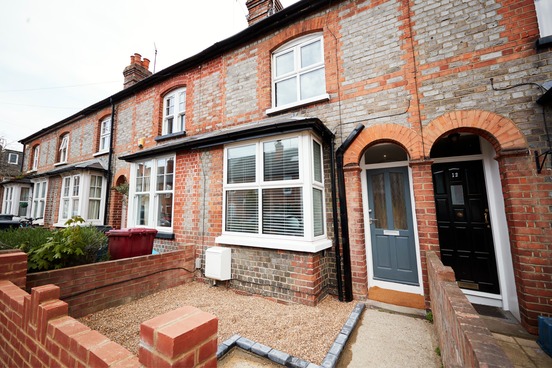
In this first of an epic 8 part series we’re going to be looking at different property investment strategies ranging from buy to let through HMO to niche strategies you may never have heard of. But where better to start than with buy to let? It is arguably still the most popular strategy.
Let’s start at the beginning! The media says buy to let is dead, but we wouldn’t rule this strategy out just yet. If you’re already in the buy to let space and doing well, there’s no need to stop using the strategy. If you’re looking to expand or future proof your portfolio though, there’s a lot to consider before putting all your eggs in one buy to let basket.
In this post we’re going to look at what the strategy is, the pros and cons of it, how to make it successful and who this strategy suits. So, whichever part of the property investment journey you’re on, you’re bound to find something interesting here.
What is the Buy to Let Strategy?
In its simplest form it is exactly what it sounds like, you buy a property to let out to tenants. You make a monthly income from the rent and over time the property should increase in value.
With this strategy you would expect both short term income and long-term capital gains. It is popular to use this model to fund pension plans. The rental income can be used to supplement part time or self-employed income and then a well thought out exit plan can maximise long term capital appreciation.
The capital made using this strategy is commonly used as a pension or passed on to future generations depending on the amount of income and the gain you’re expecting to make.
Pros of the Buy to Let Strategy
It is a tried and tested strategy and is one of the most common property strategies out there. There are always tenants looking for rentals who can’t afford to buy a property. In fact, there are more people looking to rent now than ever before. With the right due diligence this strategy is almost guaranteed to work.
You can use this strategy even with limited funds or with low up-front capital investment. It is easy to acquire finance for a buy to let property and if you factor in the costs of finance and buying up front it is still possible to make a return on your investment even with the increased costs associated with taking finance.
While a buy to let property doesn’t provide true passive income it can be very nearly passive. If you chose the right property and find a great tenant. If you only have one or two properties and you have good tenants, there’s very little in the way of hands-on management. Even if you expand your portfolio or don’t have the time to manage your investments a letting agent can help with the day to day running and keep you compliant with the latest legislation.
The strategy is easy to understand, so there is a low barrier to entry. Provided you can learn something new, and you aren’t too proud to get advice from others who have leveraged this strategy before you, it is possible to quickly learn how to maximise this kind of investment.
The income and the capital growth from buy to let are relatively predictable. If you put in the time to work out run of the mill costs like maintenance and your tenants pay the rent on time it is easy to model your income. Aside from void periods and market changes you should know how much money you stand to make in any given month.
Cons of the Buy to Let Strategy
One of the more popular ways to get started with buy to let is to take a mortgage. Since mortgage interest tax relief has been nearly phased out at this point the strategy is less lucrative. If you have the money to buy a property with no financing, your yield will be higher, but as a result, so will your tax bracket.
You can still get a 20% tax credit on disallowed finance interest, so it isn’t all a story of loss, but increased tax liability is an important consideration for serious investors. It is possible to still claim tax relief for finance interest by owning property through a limited company as the relief is still available in this situation. There are other regulations and tax implications involved with owning property via a company, so it isn’t just a case of hopping on the ltd bandwagon, you will need to get some financial advice to see if this can work for you.
It is more difficult for landlords to run properties passively as the private rental sector is becoming heavily regulated. There’s always something new to be reading up on. This is a con for everyone, specifically self-managing landlords. Using a letting agent will help to alleviate this, but their charges are quite considerable and will shrink your profit margin.
While returns on buy to let properties are predictable, they just aren’t as high as you can achieve with other strategies. HMOs for example have far higher yields but are also subject to more legislation and require more of an investment in time.
Returns may be predictable but void periods and market movements aren’t. If your tenant leaves, your property is empty and therefore not bringing in any income. If you have financed the property it will leave you paying a mortgage with no additional income to cover it. This is why it is important to invest in a property that has high demand, so voids are minimised. Similarly, market movements are not usually predictable. If properties in the area start declining in value, you may lose equity, capital or both.
What’s Needed to Make the Buy to Let Strategy Successful?
There are many keys to making this strategy successful, so while popular it’s a hard one to get right on all fronts. What you’re looking for is a well-priced, low maintenance property in a growing area with a reliable long-term tenant.
Good and frequent market research, top notch screening, frequent inspections and an ability to put in time and money when needed is how you make this strategy work reliably.
You’ll need to stay on top of the latest legislation to make sure you aren’t breaking any rules, even something as simple as forgetting to issue an EPC certificate when a tenant moves in can prevent you from later evicting a tenant.
Tenants have more powers than ever; they can dispute rent increases and take these to a tribunal. Tenants can also sue landlords for cold and damp living conditions. To avoid hefty fines, jail time or unfavourable treatment in the press you need to be providing good property and a good service to your tenants. If you are unable to keep on top of your tenants’ needs or to maintain your property, you’ll need to hire a reputable letting agent do this on your behalf.

When Buy to Let Goes Right
If you’ve managed to find the right property in the right area you can expect a good rental yield in the short term and a good capital appreciation in the long term.
If you find a good tenant, you can expect the income to be as close to passive as this kind of investment gets. A good tenant will look after the property and will be looking to stay long-term. Good tenants report issues in a timely manner allowing you to deal with them before they get worse. A good tenant can be a real asset for your property as they will often be happy to keep the property in good condition, fixing the occasional thing that goes wrong, and if you give them permission, keeping it nicely decorated as well.
If you fix issues as they occur, keep the property well maintained, cultivate good and respectful relationships with your tenants this kind of investment will almost look after itself. You should also make sure to put aside some money as a contingency for void periods or unexpected maintenance issues.
When Buy to Let Goes Wrong
If you don’t do your due diligence and you purchase a property in an area where there isn’t much demand, you’ll struggle to find a tenant. Where this is the case the property can become a drain on you finances, especially if you’ve used a mortgage to buy it. In this scenario you may have to keep dropping your rent to attract tenants, even to the point where the rent no longer covers the mortgage.
Your capital is tied up in the property for the duration of your ownership, if the property is performing poorly there’s no telling what will happen if you decide to try and sell. This is why many serious investors will diversify their portfolios. If you have some well performing assets, they can really help to carry the poorly performing assets until you’ve identified the best strategy to offload them.
Most tenants are perfectly reliable and look after their rental properties, but there are tenants out there that don’t. If you don’t screen tenants properly and don’t carry out regular inspections you might end up with a tenant that doesn’t look after your property and this can have knock on implications for your investment.
Who Does the Buy to Let Strategy Suit?
You either need to have the time to run your rental properties or you must be willing to part with 10-15% of your rental yield to have someone do it on your behalf.
This strategy will suit you if you already have buy to let properties and you’re familiar with the operating requirements.
If you are a people person with managerial experience or you have previous experience managing tenants your skills will lend themselves to this strategy, especially if you are self-managing.
A good understanding of the property market and an ability to research an area and potentially to invest in areas beyond your own doorstep would help you be successful in this strategy.
If you are a studious person with an eye for detail and a penchant for reading, understanding and following rules you’ll find this strategy pretty easy to deal with.
Connections in the property and various trade industries will stand you in good stead when it comes to maintaining buy to let properties, keeping up to date with the latest strategies and legislation, and understanding the area you’re investing in.
So that’s what’s needed to leverage buy to let as a property investment strategy. Did we miss anything? Let us know over on Facebook or Twitter. Don’t miss the next part of our strategy series where we look at the HMO strategy.



